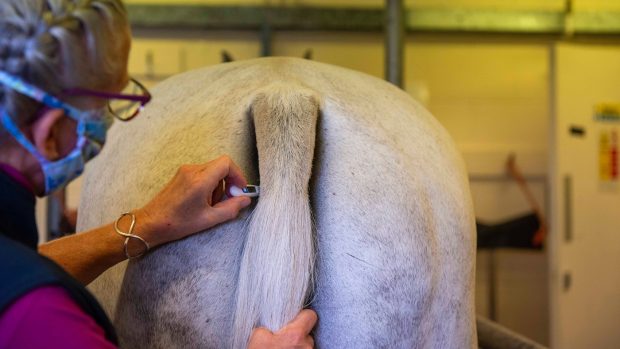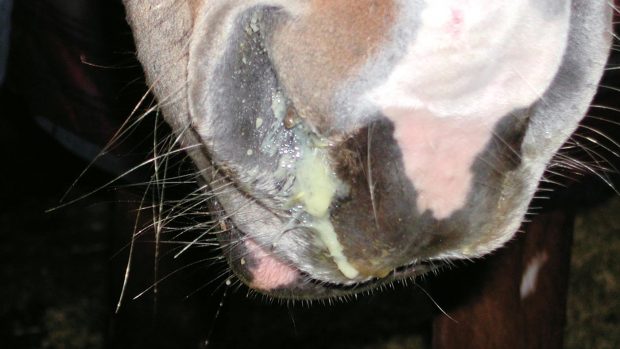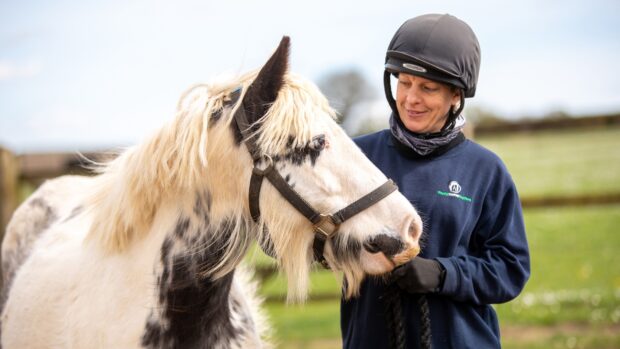In April we announced that SPANA have been chosen by readers to be H&H’s charity of the year. As part of our partnership with the charity, I was invited to go to Morocco to see the work they do first hand. I spent three days with the country director Professor Hassan Alyakine visiting three of SPANA's centres to see how they help improve the welfare of working equines in the country.
A different sort of car park
On my first morning in Morocco I was taken approximately 40km outside of Marrakech to a souk (open-air market) in the town Ourika. The market happens every Monday bringing people, mostly men, from all the surrounding villages. SPANA’s mobile clinic attends every other week and provides veterinary, farriery and saddle making services to donkey owners that bring their animals.
The souk is the “real Morocco” and is a real contrast to the shiny hotels of Marrakech. The “donkey car park” is a pretty surreal sight with more than 60 animals being left tied in the dirt while their owners shop (see video below). It was a stark realisation of the very real role that equines play in working life in Morocco.
Pretty soon after arriving at the car park a man brought his 15-year-old donkey over to the SPANA vets. The most obvious sign of distress were bald bloody patches on the back of the animal’s legs. The patches had been caused by mange (see pic below). The donkey was also poorly shod with long toes and had a large lump under her stomach from her girth.
Sorry that I can only refer to this donkey as “donkey” but a majority of owners do not name their animals. It is another reminder that they are seen as machines rather than personalities.
The donkey was given a dose of worming medicine, her mange was treated and the she was re shod (see video above). The owner was also recommended to change the girth to stop the rubbing. Having undergone her “MOT” the donkey was back on her way about 20min later.
The vets and farriers at the car park were not short on work with many owners taking advantage of the free service. This is the only mobile clinic that the charity still runs as it now has such a strong reputation that it relies on people bringing their animals to its centres.
Marrakech centre
From the Souk we went on visit SPANA’s centre in Marrakech (see picture below). It is not the biggest of its six centres in the country, but is one of the busiest.
The centre — which normally has two full time vets working — runs an open clinic every morning where they expect to see more than 30 patients. The worse cases can be admitted into its hospital where they can keep horses for months if necessary to recover.
One of the first cases that I watched the vets deal with was a grey mare called Mabrouka (which means Fortunate). She had fallen because she was carrying to heavy a load, causing deep wounds to her fetlocks, knees and face (see video below).
Perhaps it was the similarity with the fall in Black Beauty (call me sentimental), but it was extremely sad to watch.
The vet and staff did a great job at cleaning the wounds and bandaging up the mare and she was sent home with strict instructions to be brought back within three working days to have her bandages changed.
After the mare had been sent on her way, the vets moved on to treating to youngsters that were both suffering from strangles (see picture below). The elder of the two’s condition had got to such an extent that the lymph nodes had ruptured.
Strangles is a real issue in the area because owners do not understand how easily it is spread.
Once open surgery had finished, the vet Dr Boukber El Mouhaine took the time to show me around the whole centre to meet the inpatients.
There was a complete range of cases, but common issues were lesions and infected wounds. One of the most extreme cases was a horse that lesions had got so big that he had been left with a gaping hole in his hind quarters where they had been drained (see pic). I am not a particularly squeamish, but the horse’s wounds were enough to make me feel physically sick.
First day thoughts…
The work that the vets undertake with limited facilities is impressive. It is clear from spending time in the centre and the mobile clinic what a vital lifeline SPANA provides to the community.
Although overall the condition of the animals on the street is not that bad, it is a world away from the way we pamper our ponies at home. The reality is that to most people in Morocco their horse, donkey or mule is a piece of machinery.
A majority of the mistreatment appeared to come from misunderstanding, rather than malice, but that didn’t make it any easier to see. I can understand why SPANA has its work cut out to make owners understand the importance of basic welfare.
How you can help
For more information about SPANA’s work or to donate please visit the SPANA website or text STABLE to 70500 to donate £3 to help SPANA horses in need.
For my full report from Morocco don’t miss this week’s Horse & Hound — out Thursday 7 August








